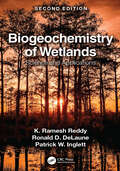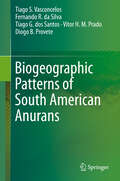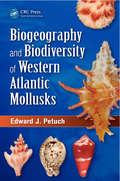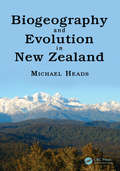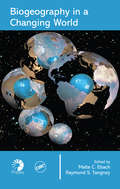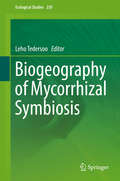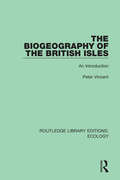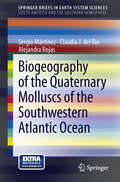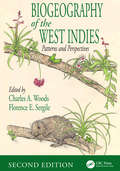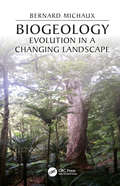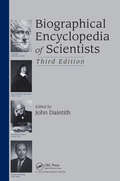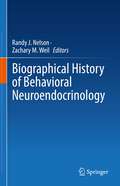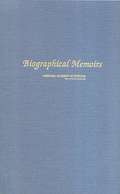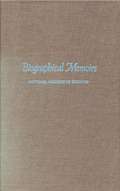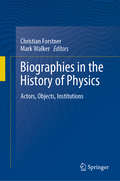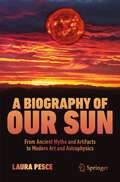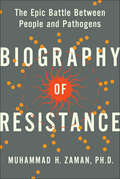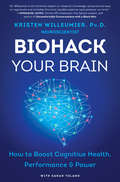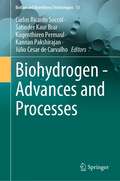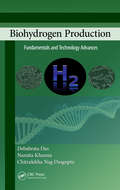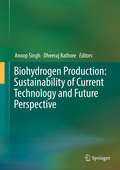- Table View
- List View
Biogeochemistry of Wetlands: Science and Applications
by K. Ramesh Reddy Ronald D. DeLaune Patrick W. InglettThe globally important nature of wetland ecosystems has led to their increased protection and restoration as well as their use in engineered systems. Underpinning the beneficial functions of wetlands are a unique suite of physical, chemical, and biological processes that regulate elemental cycling in soils and the water column. This book provides an in-depth coverage of these wetland biogeochemical processes related to the cycling of macroelements including carbon, nitrogen, phosphorus, and sulfur, secondary and trace elements, and toxic organic compounds. In this synthesis, the authors combine more than 100 years of experience studying wetlands and biogeochemistry to look inside the black box of elemental transformations in wetland ecosystems. This new edition is updated throughout to include more topics and provide an integrated view of the coupled nature of biogeochemical cycles in wetland systems. The influence of the elemental cycles is discussed at a range of scales in the context of environmental change including climate, sea level rise, and water quality. Frequent examples of key methods and major case studies are also included to help the reader extend the basic theories for application in their own system. Some of the major topics discussed are: Flooded soil and sediment characteristics Aerobic-anaerobic interfaces Redox chemistry in flooded soil and sediment systems Anaerobic microbial metabolism Plant adaptations to reducing conditions Regulators of organic matter decomposition and accretion Major nutrient sources and sinks Greenhouse gas production and emission Elemental flux processes Remediation of contaminated soils and sediments Coupled C-N-P-S processes Consequences of environmental change in wetlands The book provides the foundation for a basic understanding of key biogeochemical processes and its applications to solve real world problems. It is detailed, but also assists the reader with box inserts, artfully designed diagrams, and summary tables all supported by numerous current references. This book is an excellent resource for senior undergraduates and graduate students studying ecosystem biogeochemistry with a focus in wetlands and aquatic systems.
Biogeographic Patterns of South American Anurans
by Tiago S. Vasconcelos Fernando R. da Silva Tiago G. dos Santos Vitor H. Prado Diogo B. ProveteThis book analyzes different facets of anuran amphibian distribution in South America. We integrate alternative biological metrics employing cutting-edge methods to understand the dynamic processes underlying species distribution patterns. By using the modern biogeographic toolbox, we explore how richness gradients, phylogenetic diversity, functional diversity, and range size/endemism distribution of amphibians vary along the continent. Moreover, we present a robust proposal for priority areas for conservation of anurans in South America that maximizes representativeness of distinct biodiversity facets.
Biogeography: An Integrative Approach of the Evolution of Living
by Eric GuilbertThe recent progress in analytical methods, aided by bringing in a wide range of other disciplines, opens up the study to a broader field, which means that biogeography now goes far beyond a simple description of the distribution of living species on Earth.Originating with Alexander von Humboldt, biogeography is a discipline in which ecologists and evolutionists aim to understand the way that living species are organized in connection with their environments. Today, as we face major challenges such as global warming, massive species extinction and devastating pandemics, biogeography offers hypotheses and explanations that may help to provide solutions.This book presents as wide an overview as possible of the different fields that biogeography interacts with. Sixteen authors from all over the world offer different approaches based on their specific areas of knowledge and experience; thus, we intend to illustrate the vast number of diverse aspects covered by biogeography.
Biogeography and Biodiversity of Western Atlantic Mollusks
by Edward J. PetuchShallow water marine molluscan faunas are distributed in a pattern of distinct, geographically definable areas. This makes mollusks ideal for studying the distribution of organisms in the marine environment and the processes and patterns that control their evolution. Biogeography and Biodiversity of Western Atlantic Mollusks is the first book to us
Biogeography and Evolution in New Zealand (CRC Biogeography Series #1)
by Michael HeadsBiogeography and Evolution in New Zealand provides the first in-depth treatment of the biogeography of New Zealand, a region that has been a place of long-enduring interest to ecologists, evolutionary scientists, geographers, geologists, and scientists in related disciplines. It serves as a key addition to the contemporary discussion on regionalization—how is New Zealand different from the rest of the world? With what other areas does it share its geology, history, and biota? Do new molecular phylogenies show that New Zealand may be seen as a biological ‘parallel universe’ within global evolution?
Biogeography in a Changing World
by Malte C. Ebach Raymond S. TangneyHampered by a confusing plethora of approaches and methods, biogeography is often treated as an adjunct to other areas of study. The first book to fully define this rapidly emerging subdiscipline, Biogeography in a Changing World elucidates the principles of biogeography and paves the way for its evolution into a stand-alone field.Drawin
Biogeography of Australasia
by Michael HeadsOver the last decade, molecular studies carried out on the Australasian biota have revealed a new world of organic structure that exists from submicroscopic to continental scale. Furthermore, in studies of global biogeography and evolution, DNA sequencing has shown that many large groups, such as flowering plants, passerine birds and squamates, have their basal components in this area. Using examples ranging from kangaroos and platypuses to kiwis and birds of paradise, the book examines the patterns of distribution and evolution of Australasian biodiversity and explains them with reference to tectonic and climatic change in the region. The surprising results from molecular biogeography demonstrate that an understanding of evolution in Australasia is essential for understanding the development of modern life on Earth. A milestone in the literature on this subject, this book will be a valuable source of reference for students and researchers in biogeography, biodiversity, ecology and conservation.
Biogeography of Mycorrhizal Symbiosis (Ecological Studies #230)
by Leho TedersooThis book offers a timely overview and synthesis of biogeographic patterns of plants and fungi and their mycorrhizal associations across geographic scales. Written by leading experts in the field, it provides an updated definition of mycorrhizal types and establishes the best practices of modern biogeographic analyses. Individual chapters address the basic processes and mechanisms driving community ecology, population biology and dispersal in mycorrhizal fungi, which differ greatly from these of prokaryotes, plants and animals. Other chapters review the state-of-the-art knowledge about the distribution, ecology and biogeography of all mycorrhizal types and the most important fungal groups involved in mycorrhizal symbiosis. The book argues that molecular methods have revolutionized our understanding of the ecology and biogeography of mycorrhizal symbiosis and that rapidly evolving high-throughput identification and genomics tools will provide unprecedented information about the structure and functioning of mycorrhizal symbiosis on a global scale. This volume appeals to scientists in the fields of plant and fungal ecology and biogeography.
The Biogeography of the British Isles: An Introduction (Routledge Library Editions: Ecology #17)
by Peter VincentOriginally published in 1990, The Biogeography of the British Isles is devoted to the biogeography of the British Isles and surrounding shelf seas. Bringing together a wealth of diverse information, it is thoroughly referenced and well illustrated, and will be invaluable to students of geography, environmental science, ecology, botany, and zoology. The book traces the development of British biogeography over the last two centuries, examining key topics such as ecosystems, habitats, and niches in the context of plant and animal distribution. The book gives a detailed account of the development of biogeographical mapping and recording systems, and describes modern-day distributions, both in the countryside and in urban areas against the backcloth of human activities.
Biogeography of the Quaternary Molluscs of the Southwestern Atlantic Ocean (SpringerBriefs in Earth System Sciences)
by Sergio Martínez Claudia J. del Río Alejandra RojasThe Quaternary comprises a brief time in the Earth's history, and apart from a few exceptions, molluscan assemblages recovered from exposures along the coast of Southwestern South America (Southern Brazil, Uruguay, Argentina) are essentially the same than those that inhabit the region today, leading to the assumption that no important change in the distribution of the faunas since Pleistocene times has occurred. However, the good taxonomic and temporal resolution reached in the last years, allowed us to detect some biogeographic changes, although traditional biogeographic units remain the same (i.e. Magellanic and Argentinean Provinces). These modifications involve mainly variations in the taxonomic composition of the assemblages and in the southern boundaries of some species distributions (extralimital species), today retracted northwards. These changes are related to southward shifts of the warm waters of the Brazilian Current, correlated with global warm peaks. This phenomenon was more intense in the Late Pleistocene (MIS 5e) and in the Holocene between ca. 6500-3500 14C yr.
Biogeography of the West Indies: Patterns and Perspectives, Second Edition
by Charles A. Woods Florence E. SergileAs a review of the status of biogeography in the West Indies in the 1980s, the first edition of Biogeography of the West Indies: Past, Present, and Future provided a synthesis of our current knowledge of the systematics and distribution of major plant and animal groups in the Caribbean basin. The totally new and revised Second Edition, Biogeography
Biogeology: Evolution in a Changing Landscape (CRC Biogeography Series)
by Bernard MichauxThis detailed exposition gives background and context to how modern biogeography has got to where it is now. For biogeographers and other researchers interested in biodiversity and the evolution of life on islands, Biogeology: Evolution in a Changing Landscape provides an overview of a large swathe of the globe encompassing Wallacea and the western Pacific. The book contains the full text of the original article explored in each chapter, presented as it appeared on publication. Key features: Holistic treatment, collecting together a series of important biogeographical papers into a single volume Authored by an expert who has spent nearly three decades actively involved in biogeography Describes and interprets a region of exceptional biodiversity and extreme endemism The only book to provide an integrated treatment of Wallacea, Melanesia, New Zealand, the New Zealand Subantarctic Islands and Antarctica Offers a critique of fashionable neo-dispersalist arguments, showing how these still suffer from the same weaknesses of the original Darwinian formulation. The chapters also include analysis of many major theoretical and philosophical issues of modern biogeographic theory, so that those interested in a more philosophical approach will find the book stimulating and thought-provoking.
A Biogeoscience Approach to Ecosystems
by Johnson Edward A. Martin Yvonne E.Biogeoscience is a rapidly growing interdisciplinary field that aims to bring together biological and geophysical processes. This book builds an enhanced understanding of ecosystems by focusing on the integrative connections between ecological processes and the geosphere, hydrosphere and atmosphere. Each chapter provides studies by researchers who have contributed to the biogeoscience synthesis, presenting the latest research on the relationships between ecological processes, such as conservation laws and heat and transport processes, and geophysical processes, such as hillslope, fluvial and aeolian geomorphology, and hydrology. Highlighting the value of biogeoscience as an approach to understand ecosystems, this is an ideal resource for researchers and students in both ecology and the physical sciences.
Biographical Encyclopedia of Scientists
by John DaintithNew Edition of a Highly Regarded Reference As the first fully updated version in almost a decade, this comprehensive compendium brings together 2400 scientists who have made important contributions to the wide world of science. Rather than a Who's-Who style laundry list, this user-friendly resource provides essential biographical information and fo
Biographical History of Behavioral Neuroendocrinology
by Randy J. Nelson Zachary M. WeilBehavioral neuroendocrinologists are interested in the interactions between hormones and behaviors. This unique book tracks the development of behavioral neuroendocrinology from the first recognized paper in the field by Arnold Berthold in 1849 to the major contributors of the past century. It traces the history and development of the field by exploring the women and men who conducted the studies that revealed these hormone-behavioral relationships. Most chapters are written by the individuals who knew these pioneers best, and describe their stories and discuss the ways in which their work has shaped the field. Now is the perfect time for this book. The field is burgeoning and interest in the development of theoretical perspectives is thriving. Moreover, although this field was dominated by men early on, it has become a field with near sexual parity among its faculty, society membership, and leadership, and thus serves as an example of equitable science, training, and advocacy.
Biographical Memoirs: Volume 91
by National Academy of Science the National AcademiesBiographical Memoirs is a series of essays containing the life histories and selected bibliographies of deceased members of the National Academy of Sciences. The series provides a record of the life and work of some of the most distinguished leaders in the sciences, as witnessed and interpreted by their colleagues and peers. They form a biographical history of science in America--an important part of our nation's contribution to the intellectual heritage of the world.
Biographical Memoirs: Volume 74
by National Academy of Sciences StaffMemoirs of histories more distinguished figures
Biographies in the History of Physics: Actors, Objects, Institutions
by Christian Forstner Mark WalkerThis book sheds new light on the biographical approach in the history of physics by including the biographies of scientific objects, institutions, and concepts. What is a biography? Can biographies also be written for non-human subjects like scientific instruments, institutions or concepts? The respective chapters of this book discuss these controversial questions using examples from the history of physics. By approaching biography as metaphor, it transcends the boundaries between various perspectives on the history of physics, and enriches our grasp of the past.
A Biography of Our Sun: From Ancient Myths and Artifacts to Modern Art and Astrophysics
by Laura PesceThis book is for everyone curious about the Sun and how it has been perceived throughout human history, including the modern scientific view. Beginning with ancient myths and legends, superstitions, art and poetry, the book proceeds to explain the amazing composition of our star, how it produces the heat and light on which all life depends, as well as touching the harvesting of solar energy that is becoming so essential in the modern world. The book is illustrated by the author's own artwork and includes first-hand scientific information provided in interviews with professional astrophysicists.
Biography of Resistance: The Epic Battle Between People and Pathogens
by Muhammad H. ZamanAward-winning Boston University educator and researcher Muhammad H. Zaman provides a chilling look at the rise of antibiotic-resistant superbugs, explaining how we got here and what we must do to address this growing global health crisis.In September 2016, a woman in Nevada became the first known case in the U.S. of a person who died of an infection resistant to every antibiotic available. Her death is the worst nightmare of infectious disease doctors and public health professionals. While bacteria live within us and are essential for our health, some strains can kill us. As bacteria continue to mutate, becoming increasingly resistant to known antibiotics, we are likely to face a public health crisis of unimaginable proportions. “It will be like the great plague of the middle ages, the influenza pandemic of 1918, the AIDS crisis of the 1990s, and the Ebola epidemic of 2014 all combined into a single threat,” Muhammad H. Zaman warns.The Biography of Resistance is Zaman’s riveting and timely look at why and how microbes are becoming superbugs. It is a story of science and evolution that looks to history, culture, attitudes and our own individual choices and collective human behavior. Following the trail of resistant bacteria from previously uncontacted tribes in the Amazon to the isolated islands in the Arctic, from the urban slums of Karachi to the wilderness of the Australian outback, Zaman examines the myriad factors contributing to this unfolding health crisis—including war, greed, natural disasters, and germophobia—to the culprits driving it: pharmaceutical companies, farmers, industrialists, doctors, governments, and ordinary people, all whose choices are pushing us closer to catastrophe.Joining the ranks of acclaimed works like Microbe Hunters, The Emperor of All Maladies, and Spillover, A Biography of Resistance is a riveting and chilling tale from a natural storyteller on the front lines, and a clarion call to address the biggest public health threat of our time.
Biohack Your Brain: How to Boost Cognitive Health, Performance & Power
by Kristen WilleumierA neuroscientist’s groundbreaking, science-driven plan for revitalizing, nourishing and rejuvenating your most essential asset—your brain.Your brain is the most essential organ in your body. The brain and spinal cord are intimately connected to every bodily system and organ, so when it is balanced everything in your body and mind will function more efficiently. It’s vitally important to take proactive steps now, or you risk losing everything, including your ability to think clearly, be creative, remember details, solve problems and retain your memory.In Biohack Your Brain, leading neuroscientist Dr. Kristen Willeumier reveals how you can change your brain by making simple and easy modifications to your lifestyle. Combining clinical experience with revolutionary science, she details how biohacking your brain can boost your cognitive performance and so much more.Dr. Willeumier’s essential guidebook shows you the most effective techniques to prevent memory loss and neurodegenerative disorders like Alzheimer’s disease—and even how to overcome negative thoughts and stress. Through research and case studies, you’ll learn how to upgrade your nutritional choices along with the effective use of supplements, brain games, and physical activity to overcome cognitive damage, whether it’s from previous injuries, such as a concussion or a bad fall or from the effects of living in modern day times.Dr. Willeumier shares her own story alongside those from the NFL players and other clients she has worked with to help you leverage the latest research to find personal solutions. Biohack Your Brain teaches you how to take better care of your brain, and also how to enhance your memory, lose excess weight, increase your energy and vitality in order to create the best health and life possible.
Biohybrid Systems: Nerves, Interfaces and Machines
by Ranu JungThe discipline of neurodesign is a highly interdisciplinary one, while at the same time in the process of maturing towards real-life applications. The breakthrough about to be achieved is to close the loop in communication between neural systems and electronic and mechatronic systems and actually let the nervous system adapt to the feedback from the man-made systems. To master this loop, scientists need a sound understanding of neurology, from the cellular to the systems scale, of man-made systems and how to connect the two. These scientists comprise medical scientists, neurologists and physiologists, engineers, as well as biophysicists. And they need the topics in a coherently written work with chapters building upon another.
Biohydrogen - Advances and Processes (Biofuel and Biorefinery Technologies #13)
by Carlos Ricardo Soccol Satinder Kaur Brar Kugenthiren Permaul Kannan Pakshirajan Júlio Cesar de CarvalhoThis book presents an introduction to biohydrogen production and the recent advances and developments of the cleanest biofuel produced from bioresources. Biohydrogen has the highest energy content relative to weight and burns cleanly – generating just water. It is the best choice for fuel cells, where it generates electricity directly, in its reaction with oxygen. Biohydrogen occurs naturally as part of digestive gases from mammals and can be produced in specially designed anaerobic biodigesters, or through photocatalysis with microalgae. The gas is also easy to purify and use. The economic production of biohydrogen is still full of challenges: From the efficient and rapid conversion of the substrate to storage, transportation, and safe use, there are several aspects that need to be developed. Research in this field is addressing the issue of efficient large-scale production from several directions: Substrate pretreatment to enhance digestibility, metabolic networks analysis, microbial diversity and succession to highlight constraints in production, bioreactor, and downstream design to improve throughput and reduce costs, to name a few. The ideas and technologies presented in this book contribute to achieving the UN Sustainable Development Goal 7: Affordable and Clean Energy. The book is written for researchers and students interested in biorefinery and biofuel technologies.
Biohydrogen Production: Fundamentals and Technology Advances
by Debabrata Das Namita Khanna Chitralekha Nag DasguptaThis book compiles the fundamentals of biohydrogen production technology. It offers comprehensive coverage of microbiology, biochemistry, feedstock requirements, and molecular biology of the biological hydrogen production processes. It also gives insight into scale-up problems and limitations. In addition, the book discusses mathematical modeling of the processes involved in biohydrogen production and the software required to model the processes. It also summarizes research advances, discusses bottlenecks of the various processes, and covers the process economy, policy, and environmental impact of this technology.
Biohydrogen Production: Sustainability of Current Technology and Future Perspective
by Anoop Singh Dheeraj RathoreIncrease in green, renewable and sustainable energy demand due to higher environmental impacts (e. g. Greenhouse gases emissions, climate change, etc. ) on consumption of fossil fuel resource put down an extra pressure on government, researchers and industrialists. Among several available biofuel options, biohydrogen is considered as one of the best environmentally clean fuel and a strong candidate to fulfil the future demand of sustainable energy resource. Although, biohydrogen production technology and its use as a fuel is still in infancy stage. Selection of most sustainable production pathway, increase in production upto industrial scale and cost efficiency are some issue still persist with the biohydrogen research. "Biohydrogen Production: Sustainability of Current Technology and Future Perspective" is giving an insight for the sustainable production of biohydrogen at industrial scale. The process of biohydrogen production is complex and to opt the best suited production system for industrial scale is a frantic task. This book will provide an in depth information on all available technologies for biohydrogen production and feedstock options to choose upon. This book is also providing information on present status of the research in the field and possibility to change future fuel economy in to biohydrogen economy. Experts views provided in the chapters by renowned researchers from all over the globe in the field of biohydrogen research made this book a cornucopia of present research and future perspective of biohydrogen. This book is targeted at the researchers working on biohydrogen as well as the bioenergy scientist planning to move towards biohydrogen research. This book will provide a platform for motivation of researchers and industrialists for innovative ideas and thoughts to bring biohydrogen production at industrial scale.
